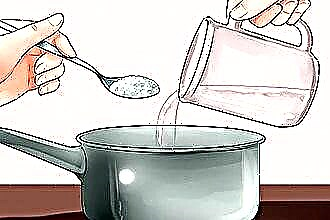Sphenoiditis is one of the most common forms of sinusitis (inflammation in the paranasal sinuses). Although the disease is not dangerous and responds well to treatment at an early stage, the statistics on it are disappointing: in the acute or chronic form, the disease is present in 15% of adults and every fifth child under the age of 12 years. And this despite the fact that the diagnosis is not always made, the disease is often defined as rhinosinusitis, although this is not the same thing at all. Therefore, let's understand, sphenoiditis - what it is, what are its distinctive features, main signs and symptoms.
A bit of anatomy
 To understand the features of the disease, one must at least a little imagine which area of the body is affected. So let's start with a little anatomy lesson. Sinuses in medicine are called paranasal sinuses, of which a person has four types:
To understand the features of the disease, one must at least a little imagine which area of the body is affected. So let's start with a little anatomy lesson. Sinuses in medicine are called paranasal sinuses, of which a person has four types:
- maxillary or maxillary - located on both sides of the nasal septum above the bones of the upper jaw, with their inflammation, sinusitis is diagnosed;
- frontal or frontal - located in the superciliary zone, on the forehead on both sides of the bridge of the nose, the diagnosis in inflammation: frontal sinusitis;
- lattice labyrinth - small formations, on the sides of the upper part of the nose bridge, bordering the periorbital zone, with inflammation, ethmoiditis is diagnosed;
- the sphenoid sinus is a single hollow formation localized in the sphenoid bone, forming the central part of the base of the skull, its inflammation and gives sphenoiditis.
The mucous lining of the nasal sinuses becomes inflamed for various reasons, and since they all connect with the nasal cavity, the disease quickly covers the entire nasal mucosa. That is why sphenoidal rhinitis or rhinosinusitis is often diagnosed. Moreover, the symptoms of these diseases are very similar.
Acute period
In the acute course of the disease, the signs of sphenoiditis are clearly expressed. The main one is a severe headache, with a clear localization in the occipital region. It is caused by the pressure of fluid accumulated in the sphenoid sinus (often with pus) on the inflamed mucosa, which irritates the nerve endings. In the absence of purulent discharge in the sinus, catarrhal sphenoiditis is diagnosed.
There are other accompanying symptoms of sphenoiditis:
- persistent low-grade body temperature;
- sleep disorders;
- severe irritability;
- feeling of general malaise.
If the disease has not affected the adjacent sinuses and the mucous lining of the nasal passages, then there are no other respiratory symptoms: runny nose, nasal congestion, swelling of the mucous membrane. This is what makes it difficult to diagnose sphenoiditis in a timely manner.
Chronic form
Chronic sphenoiditis develops within a few weeks if the disease in an acute form has not been detected and cured. After a few months, irreversible consequences may occur in the tissues of the mucous membrane, and then it will be impossible to completely cure the disease. That is why you should immediately consult a doctor if you find the following symptoms against a background of persistent occipital pain:
 a constant feeling of an unpleasant smell in the nose - caused by decaying purulent discharge that does not go into the nasal cavity;
a constant feeling of an unpleasant smell in the nose - caused by decaying purulent discharge that does not go into the nasal cavity;- sore throat, aggravated at night - provoked by thick mucus with pus and / or pathogenic bacteria running down the back wall of the larynx;
- increased headaches when in a hot or stuffy room - due to the expansion of blood vessels and increased pressure on the walls of the sinus;
- feelings of pressure on the eyes - appears with inflammation of the optic nerves or damage to the ethmoid labyrinth;
- gastrointestinal disorders - occur due to the ingestion of purulent mucus that flows down the throat into the esophagus;
- symptoms of general intoxication - dizziness, depression, weakness, sometimes fainting and loss of orientation.
When chronic sphenoiditis gives serious complications (meningitis, etc.), urgent hospitalization is necessary, since if untreated, a fatal outcome is possible.
Most often, the organs of vision are affected, and complications occur in almost 95% of cases of the disease in young children - up to 3 years. This is due to the fact that it is almost impossible to identify their disease at an early stage.
Danger of sphenoiditis
If untreated, acute sphenoiditis easily becomes chronic and often causes serious complications. This is due to the anatomical features of the location of the sphenoid sinus. It is adjacent to the ophthalmic arteries and optic nerves, the pituitary gland is located in a special depression of the sphenoid bone, and the internal carotid arteries pass along the bony grooves.
 Accordingly, if inflammation affects any of these vital organs, then the complications can be very serious:
Accordingly, if inflammation affects any of these vital organs, then the complications can be very serious:
- violation of motor activity of the eyes;
- visual impairment, up to and including its loss;
- inflammation of the meninges (meningitis);
- endocrine system disorder;
- growth dysfunctions in children;
- damage to the reproductive system.
Of course, such complications are rare, only with an advanced form of the disease, usually of an infectious nature. But inflammation of the adjacent paranasal sinuses: sinusitis, frontal sinusitis, ethmoiditis occur quickly enough and exacerbate the course of the underlying disease.
Causes of the disease
The main causes of inflammatory processes in the sphenoid sinus and, as a consequence, the development of sphenoidal rhinitis are pathogenic microorganisms that have penetrated it or permanent irritation of the mucous membrane (for example, due to prolonged exposure to strong allergens).
But not the least role is played by provocative factors that accelerate the development of the disease and can greatly complicate its course:
- small size and narrow passage in the sphenoid sinus, which makes it difficult for mucus to pass;
- anatomical features of the structure of the nose: narrowed nasal passages, curvature of the nasal septum, etc.;
- neoplasms, benign or malignant, located in the sphenoid sinus itself or in the immediate vicinity of it;
- a small foreign body that has penetrated deep into the nose and blocked the passage connecting the sphenoid sinus with the nasal cavity.

Often, chronic sphenoiditis develops as a complication of chronic rhinitis or sinusitis of an infectious nature. In this case, pathogenic bacteria from the nasal cavity or adjacent sinuses penetrate into the wedge-shaped and affect its mucous lining.
How does the disease develop
If sphenoiditis is caused by the penetration of pathogenic microorganisms, then they actively destroy the epithelial cells of the mucous membrane, provoking a strong inflammatory process, which results in swelling. The narrow passage connecting the nasal cavity to the sphenoid sinus is completely blocked and the mucus has nowhere to go. Its amount increases, which provokes headaches and a feeling of pressure on the eyes.
The lack of air circulation creates ideal conditions for the development and active reproduction of anaerobic bacteria, which leads to the formation of a large amount of pus.
When a critical mass accumulates, these secretions are forced through a natural opening and drain into the nasopharynx or penetrate into the adjacent sinuses, provoking their inflammation.
In the absence of infection in the sphenoid sinus, but with its blockage caused by edema or overlapping by a foreign body, pus does not form, and a catarrhal form of sphenoiditis develops with edema, inflammation of the mucous membrane and accumulation of clear fluid. After treatment, the edema disappears and the fluid dissolves on its own.
Diagnostic methods
 Since the first symptom of sphenoiditis is a severe headache, most often patients seek the advice of a therapist. Alas, he cannot provide effective assistance in this case. And the sooner the patient is redirected to the otolaryngologist, the more likely it is to "catch" the disease in the acute phase.
Since the first symptom of sphenoiditis is a severe headache, most often patients seek the advice of a therapist. Alas, he cannot provide effective assistance in this case. And the sooner the patient is redirected to the otolaryngologist, the more likely it is to "catch" the disease in the acute phase.
The ENT doctor conducts an initial examination of the patient and collects an anamnesis. At the appointment, it is important to list in as much detail as possible all the symptoms that bother you, as well as mention recent or chronic respiratory diseases. This will help the doctor quickly orientate and make an accurate diagnosis.
In patients who have recently had a cold, acute respiratory viral infections or acute respiratory infections, allergy sufferers, people with chronic sinusitis and rhinitis, the likelihood of developing sphenoiditis is quite high. It is also increased by severe curvature of the nasal septum, recent injuries or operations on the nose.
The doctor must carefully examine the patient's nasal cavity and nasopharynx, at the same time collecting mucous secretions from the oral cavity and nose for the study of microflora, which will help to identify the presence of pathogenic microorganisms and determine their sensitivity to various types of drugs.
The following are used as additional diagnostic methods:
- general blood test - shows the presence and rate of active inflammatory processes in the body, the general condition of the patient;
- X-ray of the nasal sinuses in several projections - will allow you to determine whether there is an accumulation of pus, how much the sinus is enlarged and whether there are polyps and other neoplasms in it or in the adjacent area;
- computed tomography is the most informative type of study, which allows you to make a diagnosis with an accuracy of 99%, and often find the causes of inflammation.
It is very important to identify whether sphenoiditis is an underlying disease or a consequence of other pathological processes in the body. Since the patient's treatment regimen depends on this.
Treatment principle
 Since in 99% of cases sphenoiditis is provoked by pathogenic microorganisms, patients are usually prescribed antibacterial drugs. The medicine and dosage are selected individually in each case, based on the results of laboratory tests and the general condition of the patient.
Since in 99% of cases sphenoiditis is provoked by pathogenic microorganisms, patients are usually prescribed antibacterial drugs. The medicine and dosage are selected individually in each case, based on the results of laboratory tests and the general condition of the patient.
Additionally, the following can be assigned:
- antipyretics - with very active inflammation and an increase in body temperature up to 38.5OWITH;
- vasoconstrictor nasal drops - used to relieve swelling of the mucous membrane and open the canal of the sphenoid sinus;
- anti-inflammatory drugs - help to stop active inflammatory processes, normalize body temperature, relieve pain;
- antifungal - prevent the development of fungal infection against the background of reduced immunity;
- immunomodulators - means that stimulate the activity of the immune system.
In addition, it is highly desirable to revise the diet and include more natural foods rich in vitamins and minerals in it. But you will have to give up spicy, cold, hot food and any alcoholic beverages for now.
It will speed up the healing process by observing a sparing daily regimen, creating normal conditions for sleep and rest.
During illness, it is necessary to avoid active physical activity, sudden changes in temperature and air pressure. And it is very important to bring the treatment process to the end, since all complications are caused precisely by the chronic form of the disease.

 a constant feeling of an unpleasant smell in the nose - caused by decaying purulent discharge that does not go into the nasal cavity;
a constant feeling of an unpleasant smell in the nose - caused by decaying purulent discharge that does not go into the nasal cavity;

